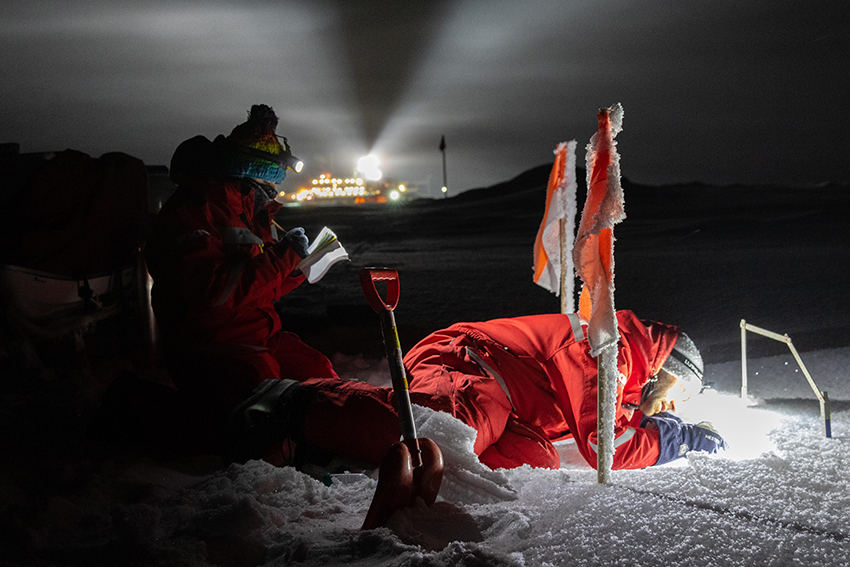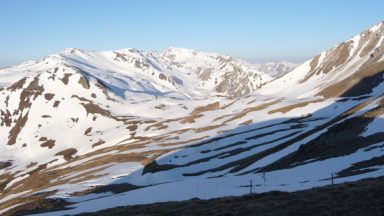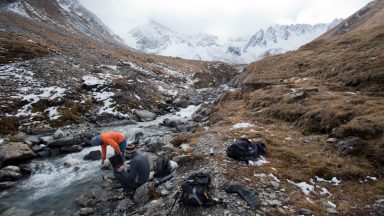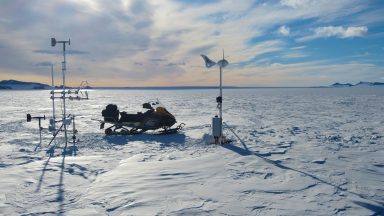Research

Snow measurements on the Arctic ice sheet during the MOSAIC Expedition. Very low to no wind conditions were very rare but made the snowpit work much easier in this case. (Photo: Alfred-Wegener-Institut / Marcel Nicolaus)

Mountain snow cover and precipitation
The spatial and temporal dynamics of the mountain snow cover are only incompletely understood, due to a lack of knowledge on deposition phenomena (total amount of precipitation and wind transport dynamics) as well as the spatial and temporal variation in melt.

Snow and mountain hydrology
The overarching objective of this research is to better understand the dominant processes controlling the spatial features of snow accumulation and melt influencing water cycle in alpine environments in the Swiss Alps.

Surface Mass Balance, Sublimation and Snow Deposition in the Extreme Environments of the Three Poles
CRYOS has set-up a first set of all-year autonomous measurement stations at several locations on the East Antarctic ice sheet to measure meteorology, snow deposition and – for the first time – a snow transport rate.

The Mountains as a Source of Renewable Energy
The (superior) potential of mountain regions for new renewables such as wind and solar (PV) is less explored. CRYOS has spearheaded research into mountain renewable energy and has shown for example that the snow cover adds significantly to PV potential at high elevation.